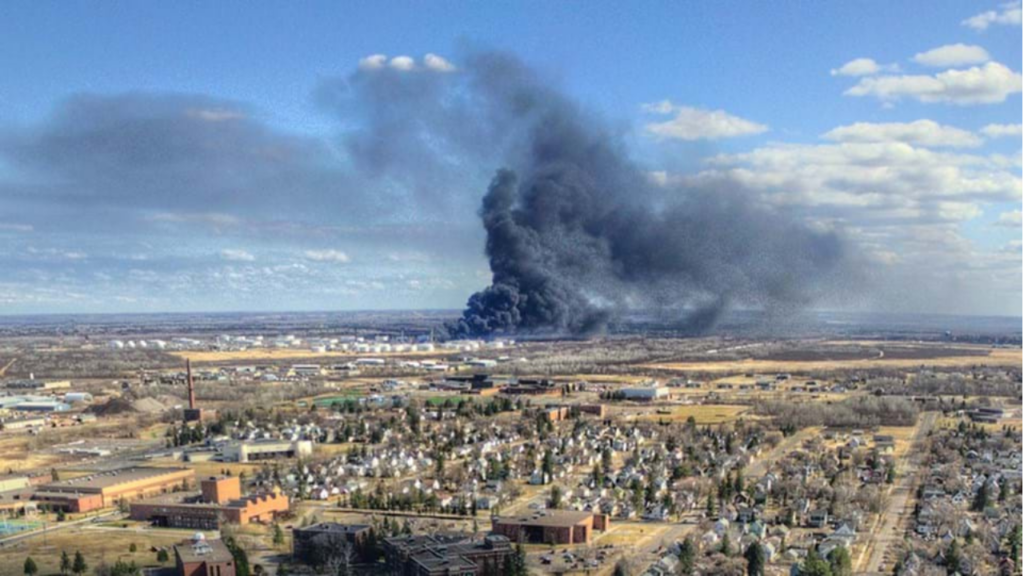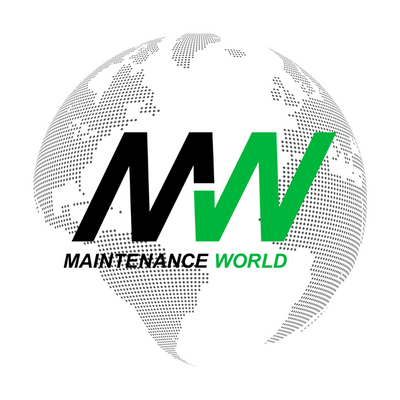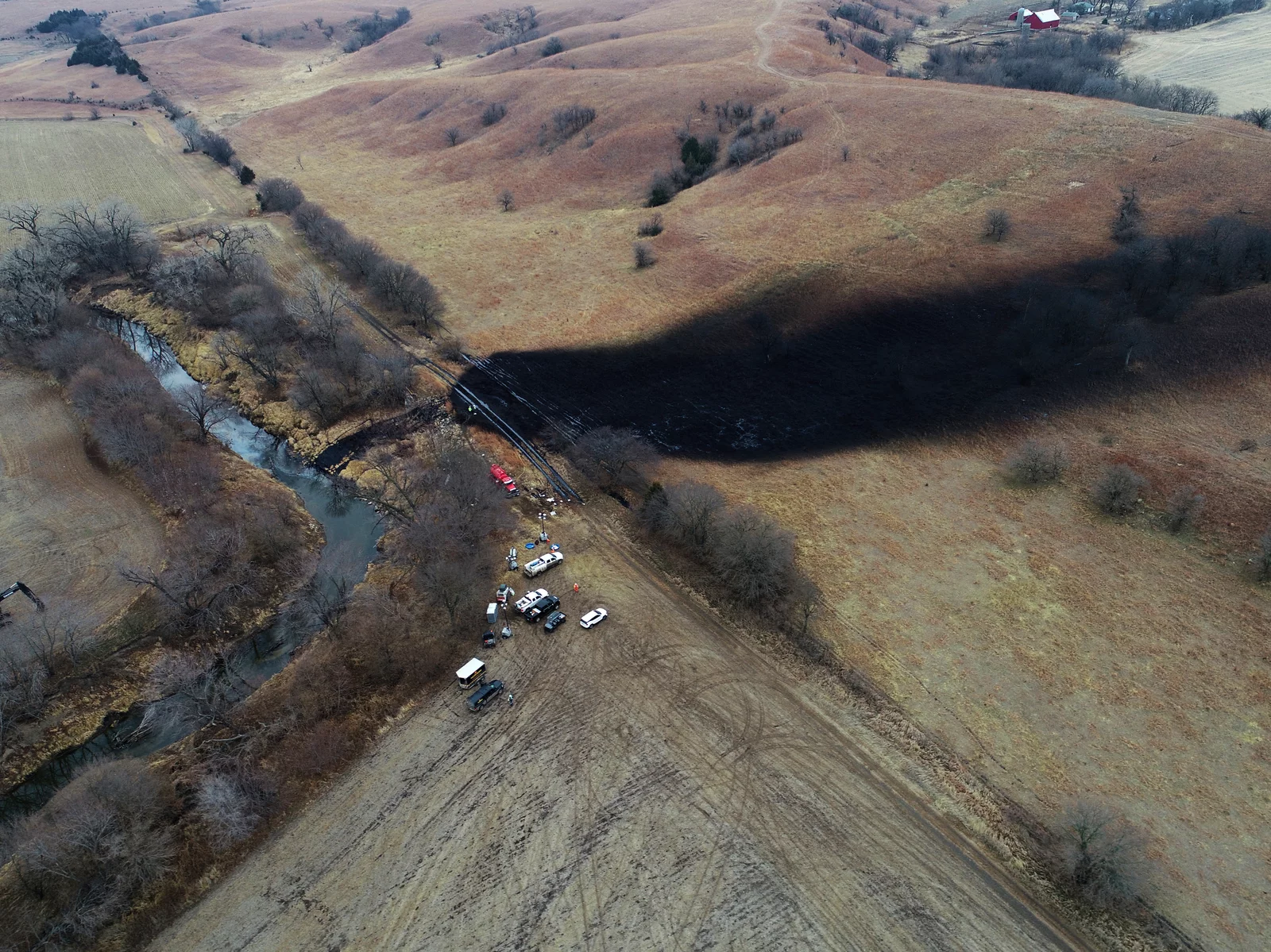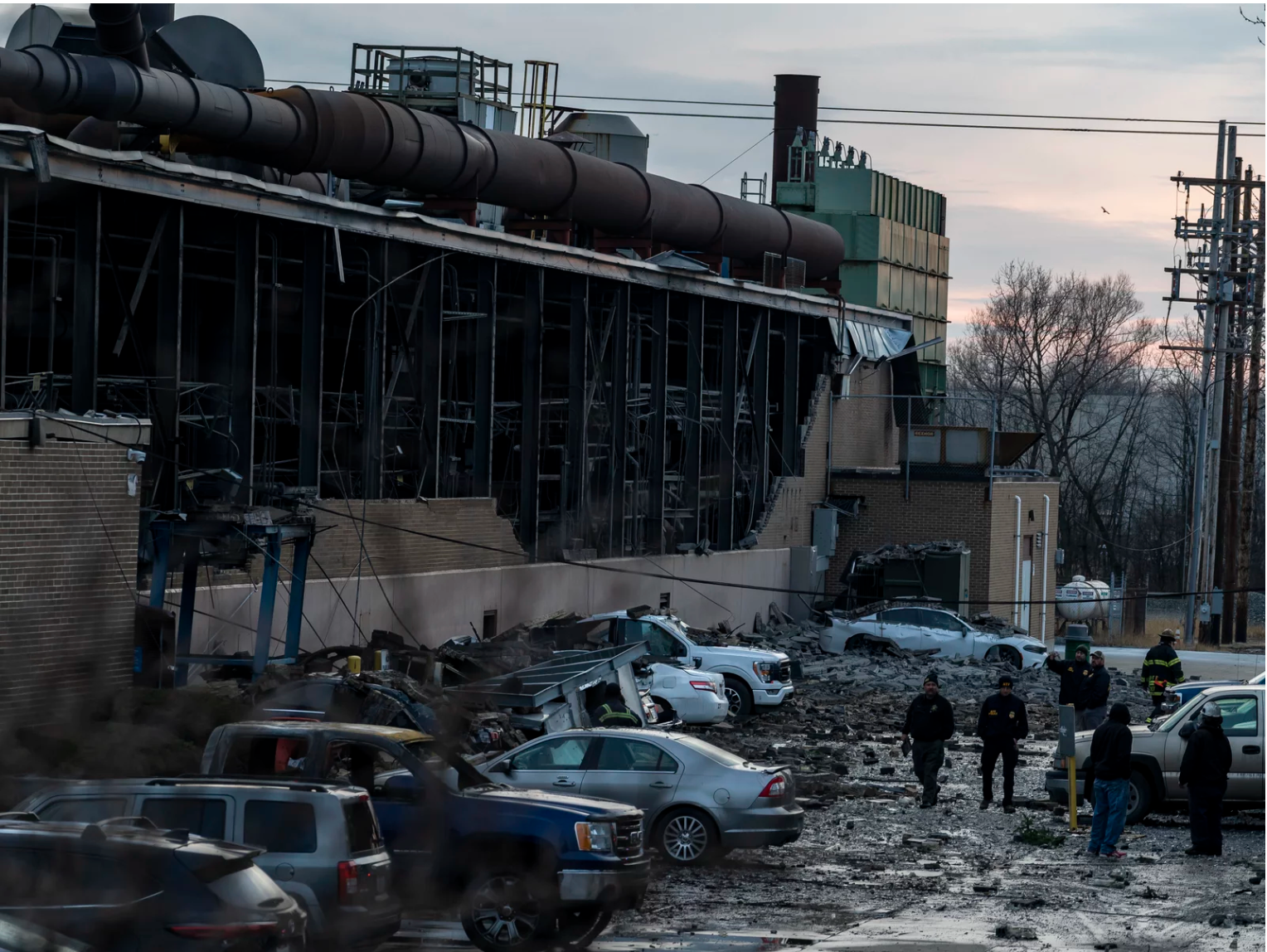Wisconsin’s Only Refinery Poised to Reopen in 2023
Natalie Johnson
Posted 07/12/2023
In 2018 an explosion at Wisconsin’s only oil refinery injured dozens and caused thousands to evacuate. Five years later, the refinery is set to reopen following a $1.2 billion rebuild and multiple safety recommendations from federal agencies. In March 2023 the refinery, now owned by Cenovus Energy, began introducing crude oil aiming to resume full operations by the end of June.

On April 26, 2018, the Husky Superior Refinery was shutting down its fluid catalytic cracking (FCC) unit for turnaround when an explosion occurred. Metal fragments punctured a nearby asphalt tank, spilling hot asphalt outside of the tank’s containment area. The asphalt ignited causing multiple fires to erupt, resulting in over three dozen employee injuries. Evacuations and shelter-in-place warnings were issued as there were concerns over the risk of hydrofluoric acid release and the large plumes of smoke looming in the air. Eventually, it was determined the risk of exposure was minimal and these orders were quickly lifted.
A report released by the U.S. Chemical Safety and Hazard Investigation Board (CSB) determined a lack of safeguards during the maintenance shutdown led to the explosion. The December 2022 report outlined 6 safety issues that contributed to the explosion.
- Transient Operations
The incident occurred while the FCC unit was being shut down. FCC units process both air and flammable hydrocarbons inside interconnected process equipment, increasing the risk of explosion making it imperative the two stay separated. Separation is achieved using FCC technology-specific safeguards, most of which were either not in place or not effective at Husky Superior Refinery during the 2018 shutdown. The refinery depended solely on catalyst slide valves to keep the systems separated during shutdown, worn from 5 years of operation, corrosion provided a path for air to enter the reactor and mix with hydrocarbons.
- Process Knowledge
The refinery lacked FCC technology-specific process knowledge to safely shutdown the unit. Employees were not adequately trained to control transient operation hazards and the shutdown procedure did not align with the licensor’s guidance. The refinery’s knowledge was largely in-house and employees were not mandated to attend training events. For at least 25 years prior to the explosion a technical review of the FCC unit operating procedures was not conducted with process engineers, the licensor, or any outside consultants. Technical reviews and proper training would have prevented the explosion.
- Process Safety Management Systems
According to OSHA, the process safety management systems in place had deficiencies that contributed to the incident. The refinery did not maintain critical safety technology information, the operating procedures were unclear, the process hazard analysis did not adequately evaluate transient operation hazards, and operator training was insufficient.
- Industry Knowledge and Guidance
Lessons from a previous FCC unit explosion at ExxonMobil Torrance Refinery were not effectively communicated to employees. There were process knowledge gaps, and industry publications lacked consistent safety expectations. The refining industry as a whole must address these knowledge gaps and educate the workforce.
- Brittle Fracture During Extreme Events
The failure of the primary absorber and sponge absorber vessels in the FCC unit resulted in brittle fracture, causing the metal debris to be scattered throughout the refinery. The use of outdated steel grades contributed to the failure, if newer grades of steel were used the vessel should have ruptured by ductile fracture with less impact and debris scatter.
- Emergency Preparedness
The brittle fracture led to debris striking an asphalt tank, leading to asphalt spilling outside the containment area and into the refinery. The ignition source was likely pyrophoric material inside the storage tank that smoldered when exposed to air through the punctured tank wall. The refinery could not prevent hot asphalt from igniting due to the extent of the spill, the urgency of responding to the explosion, and the lack of awareness as to how to properly mitigate a large area of hot ignitable asphalt.
Following the incident, Cenovus Energy is taking proactive measures to properly educate its staff and follow all 16 recommendations issued by the CSB.
Three-hundred fifty employees will now operate the refinery, which previously only staffed around 200. New training material, simulations to train staff in a wide range of operating conditions, and new control systems will aid staff in safe operations.
Additional safeguards were implemented to prevent explosions in the FCC unit and a maintenance program was developed to ensure the integrity of slide valves. In addition, other measures were taken to prevent chemical exposure.
When debris was scattered from the explosion authorities were worried the hydrofluoric acid tank would be punctured and release the toxic chemical into the air. This did not happen, but in an effort to decrease the risk of a leak in the future Cenovus Energy installed a new hydrofluoric acid (HF) storage tank and rapid acid transfer system. The system will allow HF to be quickly transferred out of the tank in an emergency to minimize the risk of exposure. In addition, acid leak detection paint, multiple water cannons, and video surveillance systems were added as additional precautionary measures.
These proactive measures will ensure Superior Refinery complies with all protocols and procedures to minimize the risk of a future incident and enhance safe operations. Typically, gasoline, diesel, and asphalt are produced at this location. As operations ramp up, the refinery is expected to produce nearly 50,000 barrels per day.
This information was taken directly from the U.S. Chemical Safety and Hazard Investigation Board. Read the full Investigative Report into the FCC Unit Explosion and Asphalt Fire at Husky Superior Refinery.


Natalie Johnson
Natalie Johnson is the previous editor/website administrator for MaintenanceWorld.com, and is currently a student at Campbell University Norman Adrian Wiggins School of Law.
Related Articles

Cardinal Manufacturing, Helping to Bridge the Manufacturing Skills Gap

South Carolina Ranked as the #1 State for Manufacturing

The Decade of American Reshoring
Lost Radioactive Capsule Proves Preventive Maintenance is as Important as Ever

HBD Condition Monitoring Devices at the center of Ohio Derailment

Failure Analysis Uncovers the Cause of the Keystone Oil Spill




